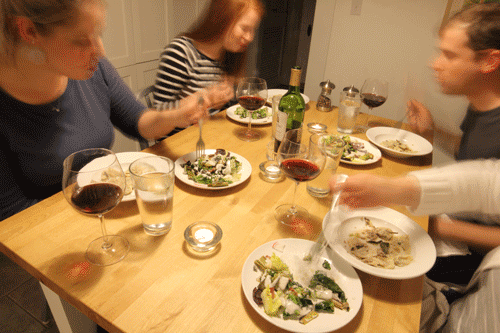design your experience
The foundation of our experience is how we feel, full stop. Looking at pretty things is nice, yes, but relating to people is much more important to our feelings than any particular thing. So why do we put such emphasis on how something looks instead of how it makes us feel? What I'm proposing is that what you should consider first and foremost about furniture is how it makes you feel. Not appearance, or how comfortable it is, but how it affects your experience while using it.
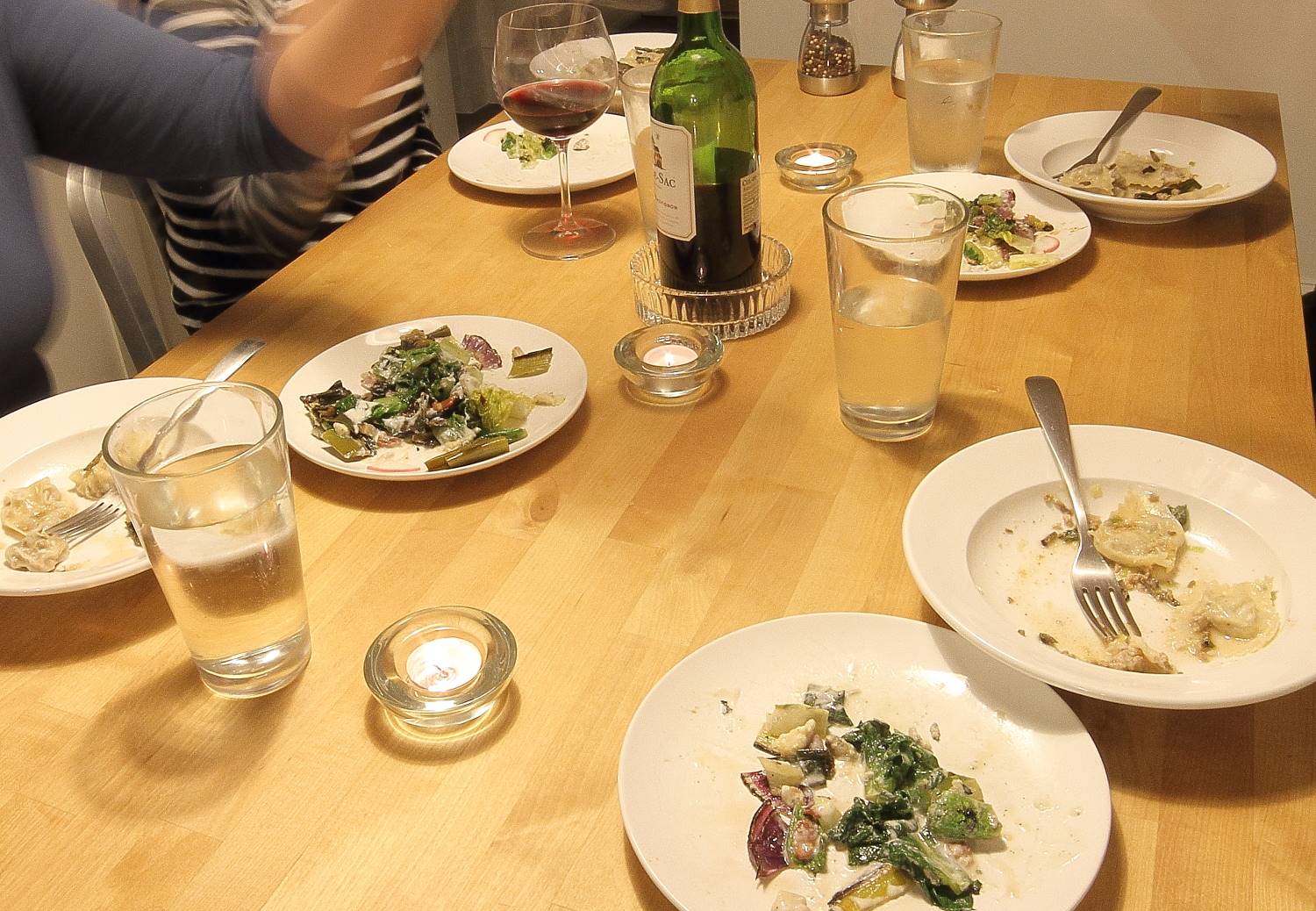
the space
It starts with the space. This is the kitchen. It's built to push people closer together. Besides cooking, its main uses are family meals and parties, both of which are casual events made better when people feel connected. People feel more connected when they are close together, so the whole environment -- not just the size of the table, but other considerations -- is designed in order to draw people together, to focus attention on the center of the group, and to make for easy interaction. But let's go through the design point by point, and I think you'll understand my thesis.
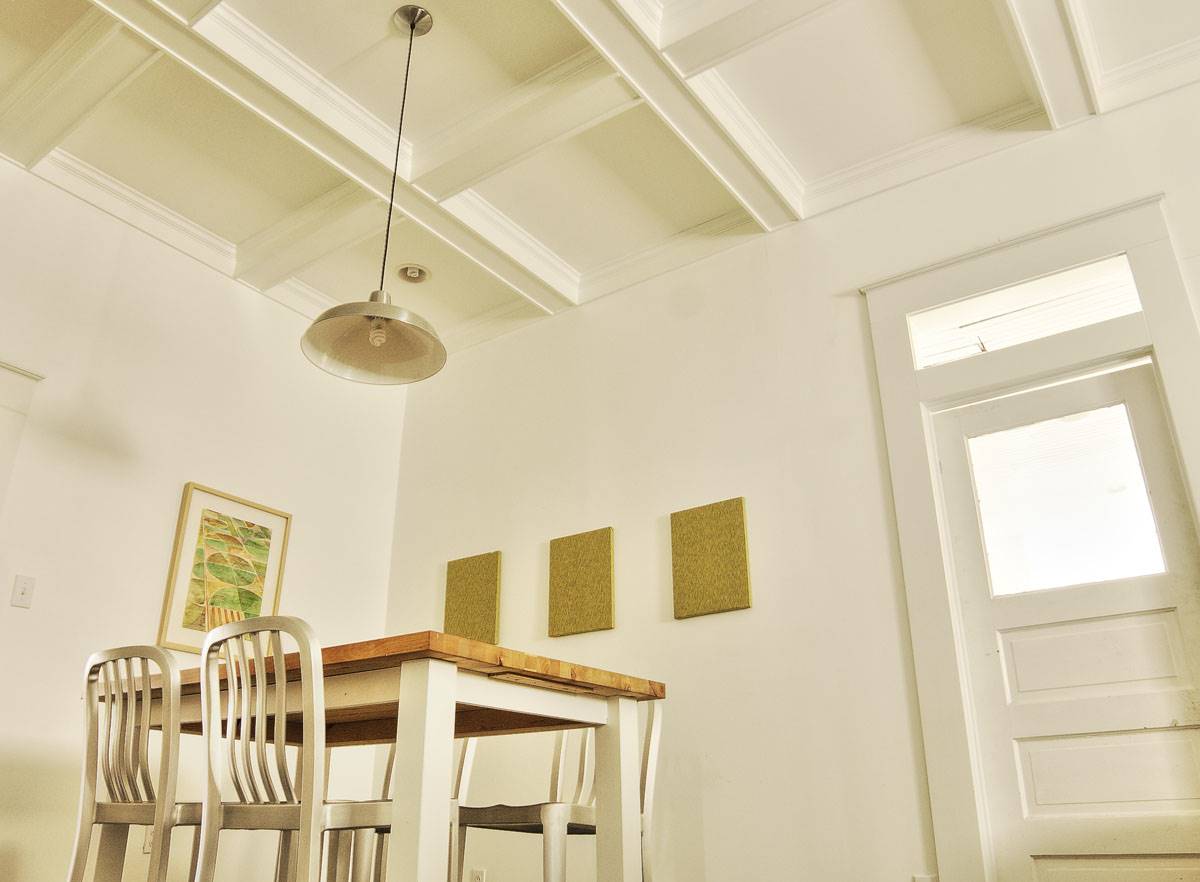
the tables
These are a Work5hop custom design and fabrication; there was nothing else out there that was quite right. There's nothing too splashy about how they look. They're pretty clean, and the materials are pretty simple. The height is a standard counter height, but the length and width are very particular. Specifically, they're each 40 inches long and 30 inches wide, which is smaller than almost everything else out there built for four people. Why? Remember: physical closeness is important. A standard 36-inch wide table simply separates people too much. It may seem that six inches is minor, but it can be the difference between people sitting back, isolated, and leaning forward in rapt attention. The materials are simple, yes, but very particular. The bases are MDF, painted white, because there's no reason for them to stand out. The tops need to be something warm and comfortable -- something that would feel pleasant and sturdy to touch and lean on, so thick wood is the right choice. Glass and most stone would be terrible in this role; the tactile, almost gentle nature of wood is unparalleled.
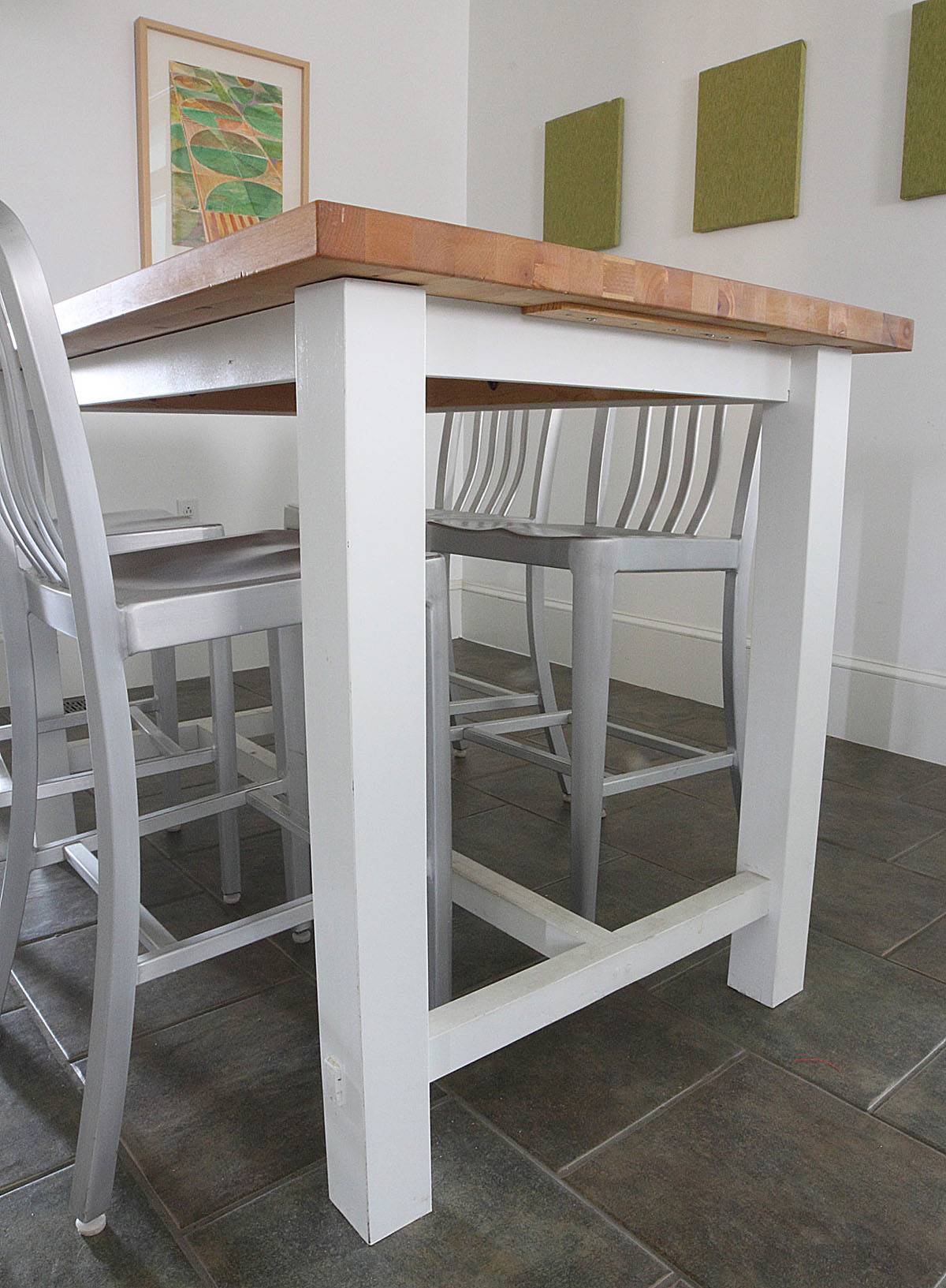

lighting
People pay too much attention to the amount of light and too little to the quality. For social situations, light should be warm and gentle; a color temperature of about 3000K is about right. It should pool in the area where you want the focus. So there's a single fixture above the table, and it drops its light straight down, framing the people sitting there. If general lighting in the room is off, then the table is quite intimate -- the cutoff between the light here and the rest of the room is relatively sharp, making it a space within a space. Not only that, but the light falls mainly on the warm-colored wood, further strengthening both the wood and the light.
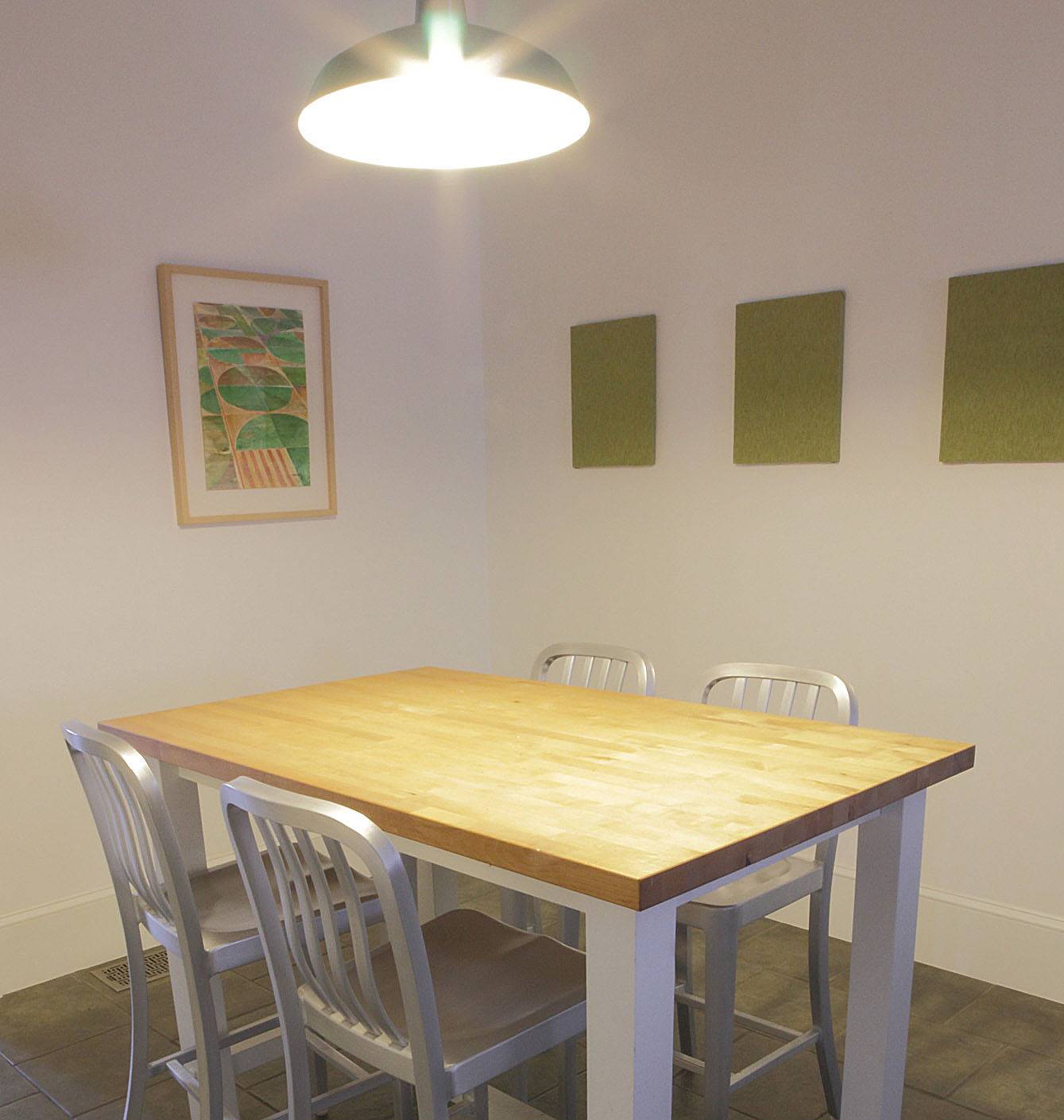
wrap
The main points to enhance the design of a dining area, then, are these: materials, the right dimensions, and the right light. Those choices won't overcome the tedium of that guy you know telling his most boring story for the fifth time, but they will take a casual group and make it friendly, or turn a decent dinner party into a great one. And those great experiences are what's important, not whether the cabinets precisely match your Philippe Starck-designed chairs. I'll talk more about the rest of the room in a future article, so stay tuned. Oh, and for the results of this experiment? Yeah, I think it worked out.
